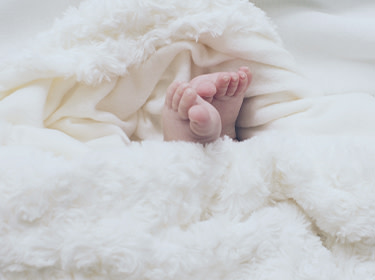What Is Delicate Clothing?
While the definition of “Delicate” as it relates to clothing can be hard to pin down, there are many items in our wardrobe we should be careful about just tossing into a normal wash cycle with regular detergent. A delicate fabric is anything made of a material that can be easily damaged, destroyed, or shrunk by hot water or harsh chemical cleaning agents. This includes:
Baby clothes, blankets, and sheets
Bras and lingerie
Hosiery
Silk
Linen
Satin
Sweaters
How Often to Clean Delicate Clothing
The answer to this question will vary depending on the item of clothing. Delicates worn close to the skin may need to be washed more often while others like linen pants every three or four wears. Delicate baby clothes, on the other hand, will naturally be more susceptible to stains and dirt, so they will need to be washed more often. Care should always be taken to wash delicate items in a gentle laundry detergent according to the garment’s care label.
How to Wash Delicate Clothes in the Washer
When possible, it’s always recommended delicate items be hand-washed in a clean sink or tub, but the realities of busy lives mean time-consuming washing by hand isn’t always possible. Always consult the care label in your garment for proper care instructions. General rules for washing delicates are:
Avoid washing in hot water and harsh detergents.
Always wash in cool or tepid water with a gentle laundry detergent
Always separate your delicate items from other dirty laundry and wash with like colors. Modern clothes washers also come with a “Delicate” or “Hand Wash” cycle designed to gently wash your delicate items. In normal wash cycles, the agitator or drum can damage, stretch, or snag delicate fabric or embellished items with sequins or fine buttons. Gentler delicate cycles replicate the gentle swishing of hand-washing to gently clean your clothes. Additionally, you can put delicate items inside a mesh laundry bag before washing to further protect them.
Follow the simple steps below to wash delicate clothes in the washer.
Step 1: Sort your delicate items, making sure to sort by fabric and color type for best results. Don’t mix items like cashmere and lace, knitwear with silk, zippered items with linen, etc., or you run the risk of damaging your garment.
Step 2: Pre-treat any stains with a gentle stain remover.
Step 3: Turn items inside out, making sure any zippers, buttons, or closures are secured, then place in a mesh laundry bag.
Step 4: Add a gentle laundry detergent and select the “Delicate” or “Hand Wash” cycle on your washer. Be sure to use cool or cold water as hot water can shrink or damage delicate fabrics.
Step 5: Remove items from the washer as soon as the cycle completes, gently reshaping any items that may have been deformed during the wash. Once they’re back to the proper shape and form, lay them flat on a drying rack or clean white towel. Take care that whatever drying solution you use, you are not stretching or deforming the fabric in its wet and weakened state.
How to Wash Delicate White Clothes
Whether your delicates are white, intricately dyed, or embellished with buttons or sequins, care should be taken to wash delicate clothing with like fabrics and colors. Your delicate white clothes can be hand washed in a sink or run through the washing machine depending on the instructions printed on their care labels. The important thing is to remember to separate your whites and wash them separately, delicate or not. This is because dyed items of clothing can transfer some of their color into your whites when washed together, dulling their brilliance, and coloring them a lighter shade of whatever colored garments they’re thrown in the wash with.
Do You Wash Baby Clothes on Delicate?
Few things are softer and more delicate than a newborn baby’s skin. To protect sensitive baby skin from abrasive irritants, parents clothe them in soft, light fabrics and opt to wash dirty laundry in a baby-safe laundry detergent. Dreft’s line of detergents provide gentle, hypoallergenic cleaning solutions that can lift tough stains from baby clothes and other delicate clothing items without all the harmful irritants found in regular detergents. Be sure to check out our article on how to wash baby clothes for a step-by-step guide on getting your little one’s clothes clean without shrinking or damaging delicate fabric.
How to Wash Delicate Clothes by Hand
Soaking delicate clothing items before washing will help get them cleaner. It can help break down stains and makes the washing process easier, saving wear and tear on delicate fabrics. Below are step-by-step instructions on hand washing your delicate clothing items.
Step 1: Prepare the sink, tub, or basin you will be using by cleaning it thoroughly. Kitchen and bathroom sinks can have traces of dirt, soap, toothpaste, skin care products, and grease that can easily transfer to or damage your delicate items. Remember, the whole point of hand washing is to protect delicate fibers, so cleaning your wash basin is a critical first step.
Step 2: Fill the basin with cold water before adding your delicates. Even the force of running water can stretch or damage delicate fibers. If you need to add more water after adding your garments, deflect the flow using the back of your hand. Water should always be below 85 degrees as hot water can cause colors to bleed or the garment to shrink.
Step 3: Add 1 tablespoon of gentle liquid detergent to your water. Adding more detergent than this means you will need to spend more time rinsing, which we want to avoid. Always add the detergent before adding clothes so that you can swish the mixture around to dissolve the detergent.
Step 4: Add your garment(s) to the mixture, being careful not to add too many at once. Once it is completely saturated. Swish the garment gently allowing it to soak for at least 5 minutes. Be careful not to twist or scrub the fabric, which could damage it.
Step 5: Drian the basin, lifting your garment out without wringing dry. Fill again with cool or tepid water, place the garment back in and swish gently to rinse. Repeat this process until no soap suds are seen.
Step 6: Once the garment has been rinsed, it needs to be air dried. If it is lightweight, it can be hung from a padded hangar provided this won’t stretch the fabric. Woolen items should be dried flat on a drying rack or clean white towel. Ensure items dry away from sources of heat like air vents, radiators, or direct sunlight as heat can cause delicates to shrink.

Treating Stains on Delicate Clothing
It’s important to pay attention to how you remove stains from delicate fabric, otherwise you could deform or damage the fibers during the washing process. As always, you should consult the care label on your garment before beginning the stain removal process. Follow the steps of this stain removal process for the best results.
Step 1: Treat the stain as quickly as possible so that it doesn’t have time to set. Blot off excess stain and, if care label indicates “dry clean only”, take to a dry cleaner as quickly as possible. Otherwise, sponge the area right away with cold water being mindful not to scrub and damage the fabric.
Step 2: Soak the garment in a clean tub using cold water. Fill the tub first to prevent running water from damaging the fibers, then gently soak and swish the garment for at least 5 minutes.
Step 3: Make a mixture of cold water and white vinegar, using equal parts of each. Take a clean white cloth, dip it in the solution, and use the dampened cloth to clean the stain. Be careful not to saturate the stain or it may spread. Continue blotting and re-wetting until the stain disappears.
Step 4: Using your tub of clean, cold water, gently swirl the garment until the cleaning solution is removed.
Step 5: Allow the garment to air dry flat on a drying rack or clean white towel.
What Detergent to Use for Delicate Clothes
Not only does washing your delicates in baby-safe laundry detergents gentle on infants’ sensitive skin, but they’re perfect for washing delicate clothing from bras to baby onesies. Dreft’s specially formulated newborn detergents are hypoallergenic and built to fight the toughest stains without leaving the harsh surfactants and laundry boosters of a regular detergent.
How to Dry Delicate Clothing
When drying your delicate clothing, whether it is lacy undergarments or baby onesies, you should always air dry, taking care to avoid any sources of heat. Never hang your garments, particularly heavy knit wools, from anything but a padded hanger as you could stretch or deform them. Dry your delicates flat, either on a wire rack or clean white towel, taking care to reshape any deformities in the fabric before leaving it to dry. You can also point a fan at the garment to speed the drying process. Although it may come as a surprise how many of your garments qualify as delicate items, the good news is that with some simple sorting of dirty laundry and a gentle laundry detergent on hand, washing your delicate items can be just as easy as regular laundry. Keep these simple steps and instructions in mind, and you’ll ensure your delicate garments stay soft, supple, and looking as good as the day you bought them for many years to come.

